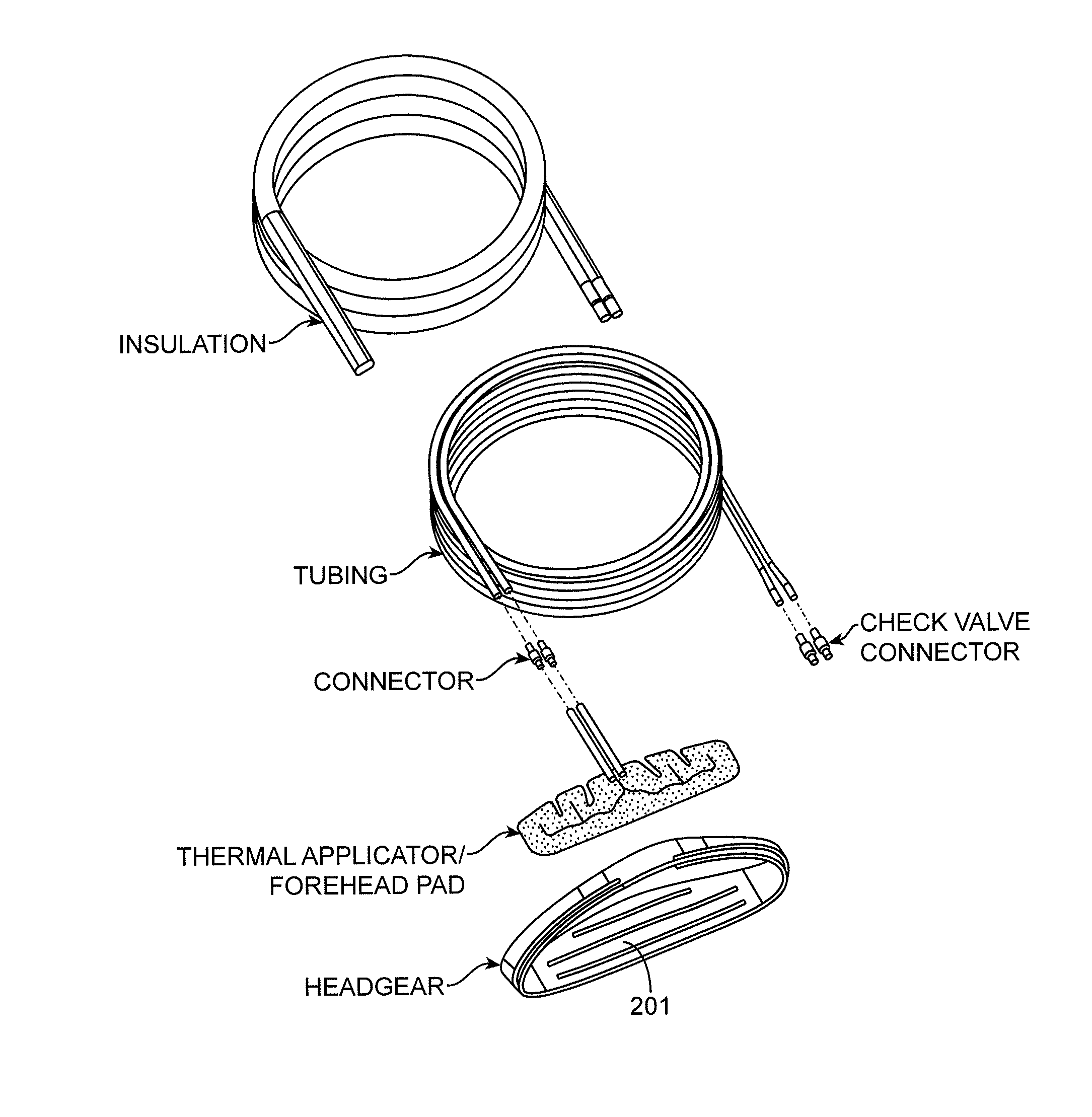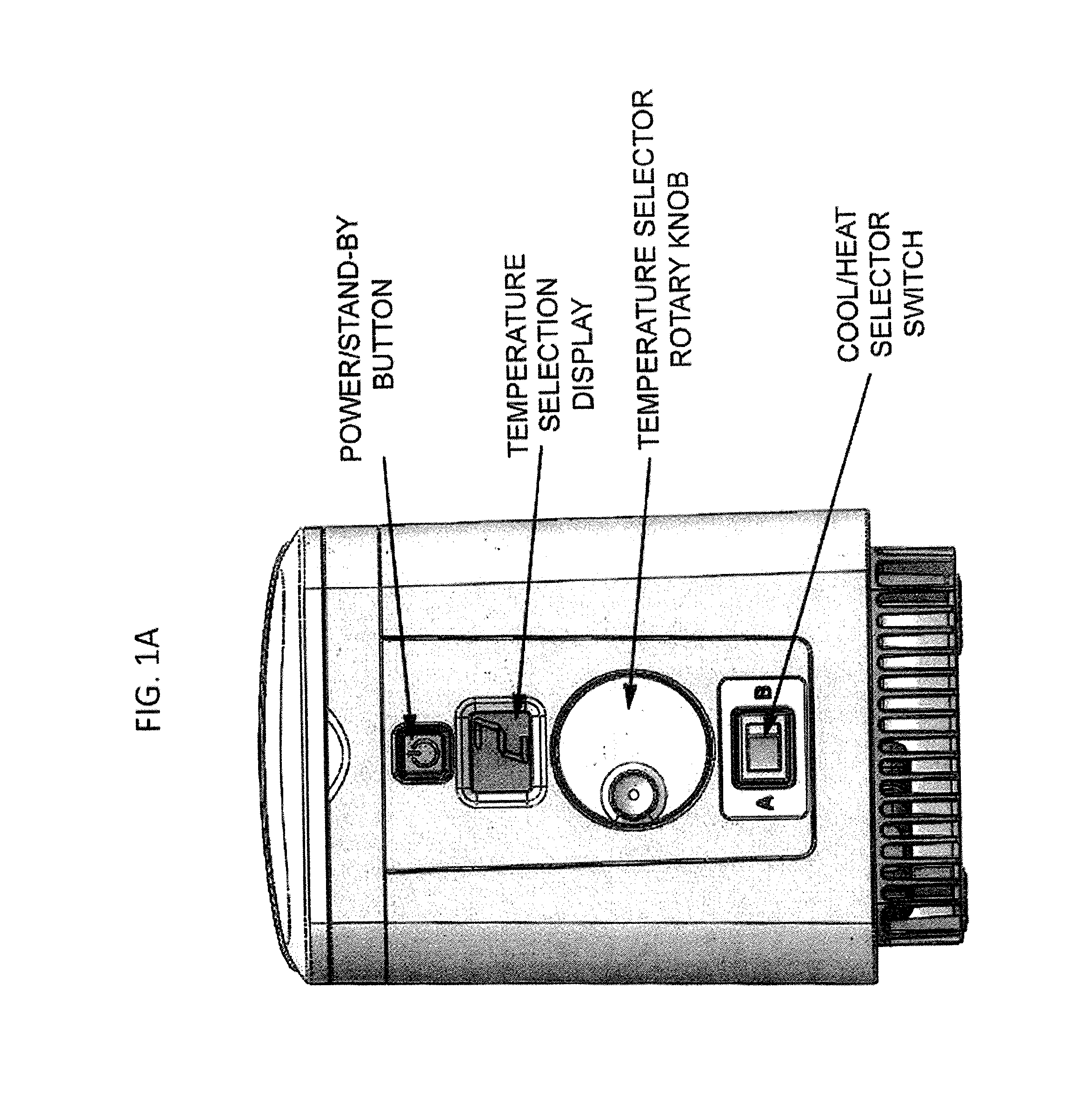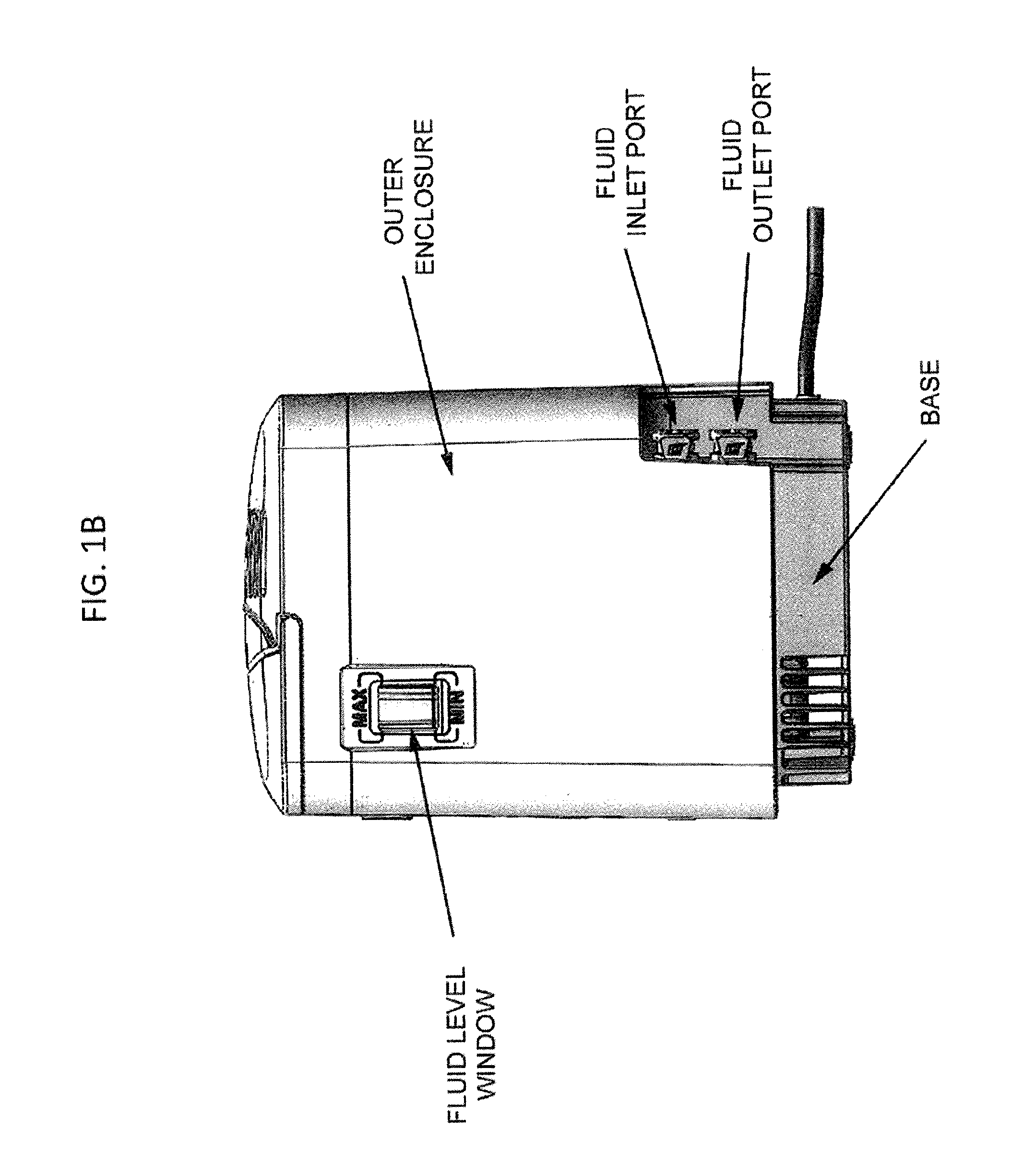Apparatus and method for modulating sleep
a technology of sleep and apparatus, applied in the field of apparatus and method for modulating sleep, can solve the problems of not providing a substantial amount of energy to other, non-facial regions of the face, and not delivering a substantial amount of thermal energy to non-facial portions of the head, so as to prolong sleep duration, improve sleep quality, and reduce sleep onset latency
- Summary
- Abstract
- Description
- Claims
- Application Information
AI Technical Summary
Benefits of technology
Problems solved by technology
Method used
Image
Examples
Embodiment Construction
[0055]Described herein are apparatuses (including devices and systems) that specifically control the temperature of a patient's forehead region to modulate sleep. For example, described herein are apparatuses and methods configured to provide a temperature at the patient's forehead that is greater than ambient temperature (e.g., in some variations between about 25° C. and about 42° C.) for a period of time, which may be a predetermined period of time, to reduce sleep latency, enhance depth of sleep, and / or extend the time a subject sleeps. In some variations the subject may be a subject suffering from insomnia.
[0056]As used herein the term “warm” or “warming” generally refers to the temperature relative to the ambient temperature surrounding a subject, such as the ambient air temperature (e.g., typically 22° C.) surrounding the subject. A subject wearing an apparatus may perceive a stimulus greater than ambient temperature as “warm”, even if the actual temperature of the thermal tra...
PUM
 Login to View More
Login to View More Abstract
Description
Claims
Application Information
 Login to View More
Login to View More - R&D
- Intellectual Property
- Life Sciences
- Materials
- Tech Scout
- Unparalleled Data Quality
- Higher Quality Content
- 60% Fewer Hallucinations
Browse by: Latest US Patents, China's latest patents, Technical Efficacy Thesaurus, Application Domain, Technology Topic, Popular Technical Reports.
© 2025 PatSnap. All rights reserved.Legal|Privacy policy|Modern Slavery Act Transparency Statement|Sitemap|About US| Contact US: help@patsnap.com



